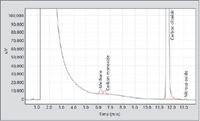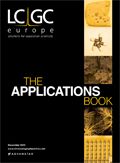Trace Analysis of Greenhouse Gases Using a Barrier Ionization Discharge Detector
The Application Notebook
Shimadzu Europa GmbH
According to the recent IPCC report (1), climate change as a result of global warming is estimated to proceed at a faster rate than previously assumed. Consequently, easy and efficient monitoring of the greenhouse gases methane (CH4), carbon dioxide (CO2), and nitrous oxide (N2O) is becoming an increasingly important issue. The analytical challenges that surround this approach are the varying concentration ranges of the components in ambient air, ranging from high ppm levels for carbon dioxide, low ppm to ppb levels for methane, and trace levels below 100 ppb for nitrous oxide. So far, a rather complex GC system including two or three detectors was needed to fulfill all requirements. With the new Barrier Ionization Discharge Detector (BID), this approach can be simplified to a gas chromatography (GC) system with one detector and one column only.
Experimental
The BID detector belongs to the family of helium ionization detectors. It is a universal detector able to measure all types of organic and inorganic compounds except for helium and neon. Because of the novel plasma technology, the BID detector combines the high detection sensitivity of the helium ionization technique with robustness and long-term stability.
Gas injection was carried out using a two-position six-port VALCO valve with a 1 mL sample loop. Chromatographic separation was performed on a 2 m Restek ShinCarbon ST micropacked column with a 1 mm inner diameter and 1/16" outer diameter. The column was selected because of its sample capacity, and therefore its ability to obtain sufficient separation of methane from the ambient air matrix peak, even with a 1 mL injection volume. Figure 1 shows the chromatogram of an ambient air sample taken in the vicinity of a larger city. This is why carbon monoxide is also present in the chromatogram.

Figure 1: Ambient air chromatogram sampled at the southern edge of the city of Duisburg (Germany). Results are shown in Table 1.
The separation of matrix air requires a temperature programme starting at 30 °C, then hold for 5 min, and a temperature increase at a rate of 10 °C/min to 120 °C. Helium with a purity of 6.0 or better was used as carrier gas and discharge gas for the BID detector. The carrier gas flow over the ShinCarbon ST column was 14 mL/min. The BID was operated at 250 °C with a discharge gas flow of 80 mL/min.

Table 1: Quantitation results from the chromatogram in Figure 1.
Results and Discussion
Quantitation was based on a 500 ppb gas standard of methane, carbon dioxide, and nitrous oxide in helium (Figure 2). Despite the low concentration, good reproducibility results of RSD 1.1% for methane, 1.4% for carbon dioxide, and 1.1% for nitrous oxide were obtained. The achieved detection limits for the respective compounds are shown in Table 2 and calculated at a signal-to-noise ratio of 3.3.

Figure 2: Standard chromatogram of 500 ppb methane, carbon dioxide, and nitrous oxide in helium.
The results show that detection limits below 100 ppb can be easily obtained using the BID detector. With the ShinCarbon ST, sufficient separation of methane from matrix air is achieved. If carbon monoxide is present in the sample, it can be separated from methane as well (resolution R = 0.92). More important is the good separation of carbon dioxide, even in high concentrations, from trace concentration of nitrous oxide (resolution R>4). In conclusion, GC systems with BID detectors offer a new and easy solution for greenhouse gas trace measurements with a simple one-column, one-detector configuration.

Table 2: Detection limits calculated at a signal-to-noise ratio of 3.3.
Reference
(1) 5th IPCC Report Final Draft (accepted): http://www.climatechange2013.org/report/review-drafts/

Shimadzu Europa GmbH
Albert-Hahn-Str. 6–10, D-47269 Duisburg, Germany
Tel: +49 203 76 87 0 Fax +49 203 76 66 25
E-mail: shimadzu@shimadzu.eu
Website: www.shimadzu.eu

Separation of Ultra-Short and Long Chain PFAS Compounds Using a Positive Charge Surface Column
December 11th 2024A separation of ultra-short and long chain PFAS (C1-C18) is performed on a HALO®PCS Phenyl-Hexyl column along with a HALO®PFAS Delay column which demonstrates excellent retention for both hydrophilic and hydrophobic analytes.






